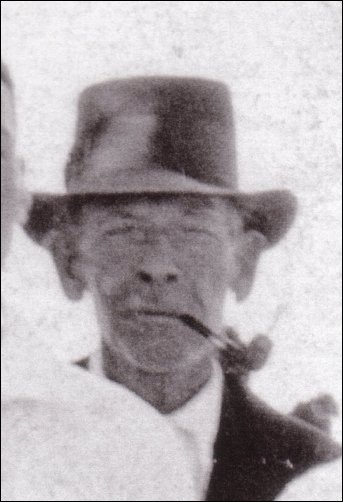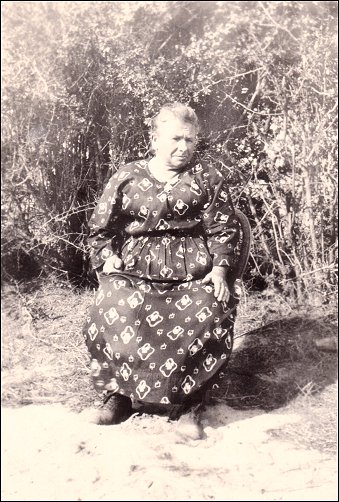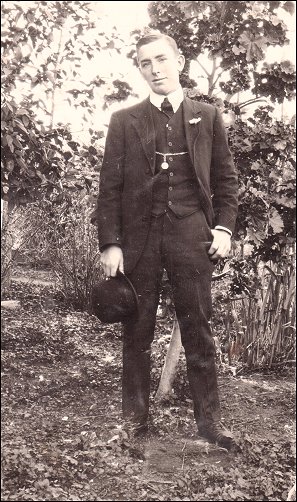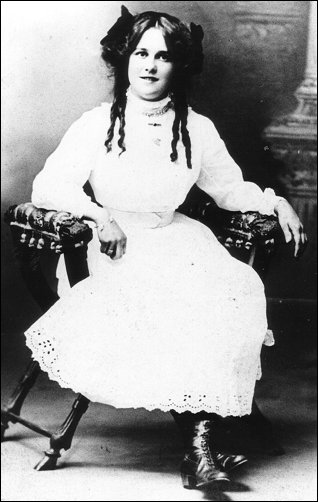The Lees Family: Pioneer Market Gardeners in McKinnon and Bentleigh 1850-2003

Members of the Lees Family. Left to Right: Jack Allan Lees, Vera Victoria Briggs, James Henry Lees, Linda Doris Tobin, Vera Auraria (McClelland) Leonard William Lees. Courtesy Jan Rigby.
James Lees and his brother William arrived in East Brighton, now Bentleigh, at the beginning of September 1850. William purchased four and a half acres on the corner of Jasper and Centre Roads paying forty-one pounds to J. Horwood for the property. He also purchased from agent Thomas Branbury a thirty-eight acre block in McKinnon Road, between Wheatley Road and the McKinnon Railway in January 1851, this time paying twenty-six pounds to agent. It was on this land that the brothers established their first market garden. [1] Not long after, in 1851, James established another market garden in Jasper Road East Bentleigh where he lived with his family.
James and William Lees, originally from Barkisland, West Yorkshire, were transported to New South Wales after breaking into their sister’s home and stealing coins. Both were sentenced to death but this was commuted to transportation to Sydney Cove for life. William was not married but James left behind a wife and three daughters.
William served his time as a convict with John Dixon at Parramatta, just outside Sydney, while James was nearby working on the large holding of Sir John Jamison, named Regent Villa. [Later recorded as Regentville] There he learned to cultivate the large vineyards, vegetable gardens and orchards. He also developed a love of horses and the skills of a teamster and horse breaker. After receiving his Ticket of Leave he drove teams over the Blue Mountains and beyond to Bathurst. Meanwhile William was driving from Goulburn down to the Murray River.
Whilst at Regent Villa, James met and became friends with James Bent, a Lancastrian who had been transported to New South Wales after being sentenced to fourteen years of house breaking. Subsequent to gaining his pardon he, like William Lees, was living and working at Goulburn.
It was about 1849 that William and James Lees together with James Bent and his family, their friends of almost twenty years, left New South Wales and travelled overland to Melbourne.
After their arrival in East Brighton in 1850 the Lees brothers worked the land in McKinnon Road drawing water from the creek that ran through the corner of their land and later from a hand made well. They built a slab hut and stables and planted hedges that ran the circumference of their land. A number of large gum trees graced the property at that time. By 1861 they had built a lath and plaster hut which was occupied by Edward Hellins, a man who possibly worked for them. In addition to working on the property James was involved in breaking-in horses. At this time their friend James Bent had established a market garden in East Bentleigh and subsequently the hotel on the corner of Jasper and McKinnon roads known as the Gardeners Arms.
An astute William bought and sold many blocks of land around Bentleigh in the next ten years. He never married and died at McKinnon on October 22, 1861. He was buried at the Brighton Cemetery three days after his death. Although illiterate when he came to Australia at the time of his death he could read and write.
A little more than two years before William’s death, in February 1859, his brother James married twice widowed Mary Guerin at St Andrews Church of England, Brighton. Born in County Clare, Ireland, she arrived at Port Phillip in March 1841 on the Neptune and worked as a servant in East Brighton. Mary had five children, Michael, Patrick, Catherine, Daniel and Edward from her earlier marriage to Daniel Quirk. At the time of her marriage to James Lees these children ranged in age from three to ten.
James and Mary Lees had seven children and lived in a slab hut on their property in Jasper Road East Bentleigh between McKinnon and Centre roads where they had establishing a market garden. [2] James purchased several other pieces of land in Jasper Road between Centre and South Roads, one which he used as a training trotting track for horses competing in bush races.
James Lees died of typhoid fever at the McKinnon Road property in June 1874. He was buried in his brother William’s grave in the Church of England section at the Brighton Cemetery. He was seventy-four years old and illiterate at the time of his death. His wife Mary Lees died fourteen years later at the age of sixty-eight in December 1888, also at McKinnon Road. She was buried at Brighton Cemetery in the Roman Catholic section. Her grave was later shared with sons Michael and Thomas Quirk, James Henry Lees and a grandchild. Mary was unable to read or write.
Joseph Lees, known as Joe, was born in Jasper Road, East Brighton in 1852, the first child of James and Mary Lees. His early childhood consisted of hard work overseen by a tough father. He worked in the gardens and delivered produce to the markets. But his life was also filled with the bustling and riotous behaviour of his older step-brothers, in particular Michael who was ten years older. Joe attended East Bentleigh School a few days a term, or when his father could afford it.
Surrounded by the growing families of Irish relatives, the mix of hard work, wild playing. horse racing, drinking and gambling, Joe’s reputation as a bit of a lad appeared to halt when at thirty years old he married twenty-one year old Catherine Ring from Cheltenham. They married at St Paul’s Cathedral in Melbourne in January 1884. After their wedding they lived and worked as market gardeners on the property in McKinnon Road where their thirteen children were born. [3]

Joe Lees. Courtesy Jan Rigby.
Catherine Ring was known as Kate. Her father, Charles Ring, was a hatter in Flinders Street Melbourne and her mother was Charlotte Rout whose father had been transported from London to Tasmania in 1830 for stealing a silk handkerchief. They lived in Spring Grove Cheltenham from where Charlotte, a fully trained nurse, was often called upon to assist women during child birth. [4 & 5]

Kate Lees (nee Ring).
Joe Lees inherited his father’s land and was quite successful racing his horses, using the bush track behind the Hotel on the corner of East Boundary and Centre Roads for training. A family member remembers him and friends lighting cigars with pound notes after a big win. His champion horse was named Lady May. Later his two sons George and Stan became apprentice jockeys although they did not make riding a career.
Joe lived on the McKinnon Road property growing onions, cauliflowers, cabbages, and potatoes. He sold a portion of his land to the railway, which is now taken up by Nicholson Street and the railway line. Gradually he sold off other pieces of the McKinnon Road land but this did not stop him planting crops on the land he once owned. He planted onions on land in Lees Street previously sold to William Cowie and no matter how many times Cowie complained to him, he just kept planting. It is believed he also claimed back land on the corner of Nicholson and Lees Streets by ‘Adverse Possession’.
Joe and Kate’s home was a cottage made from wooden slabs with a lean-to at the back, used as a wash-house. The dirt floor was hardened by many years of wear and the walls were lined with Hessian glued with newspaper and bits of wallpaper and a faded picture of the Last Supper. Years later two front rooms with timber floors were added and a veranda which was later made into a sleep-out. They had three gaslights. Every spring the family helped to move outside a fifteen feet long heavy kitchen table and two long forms made from railway sleepers, while the walls inside were whitewashed. The kitchen had a combustion stove and large black kettle sat on top. A path edged by a box thorn hedge led from McKinnon Road past two large pine trees to the cottage in the centre of their property. On the veranda was a cocky in a cage. This house in McKinnon Road was demolished in 1941 and the land sold. As well as the market garden, on the land they had a cow and chickens, and stables for their horses. There was also a one-roomed lath and plaster building that housed Joe’s two brothers Bill and Tom Lees.
Joe Lees died in July 1928 aged seventy-six and Kate eleven years later in November 1939 aged seventy-four. Both were buried in Brighton cemetery. They had thirteen children one of whom was James Henry who was born on November 11, 1890, the fourth child born to Kate within five years.
Named after his grandfather, James was always known as Jim. His schooling began at East Bentleigh but he completed his education at the new Ormond State School in Wheatley Road. Before Jim went to school each morning, and after school in the afternoon, his father expected him to complete several chores. The night soil from the family toilet had to be emptied and, usually on two occasions each week, the dray had to be loaded with produce from their property so that if could be transported to market. On the days the wagon had to be loaded his father would collect him from school, but on one occasion James went off playing football instead of waiting on the side of the road for his father. James’ father was most annoyed at his son’s transgression and made him walk home behind the dray before helping with the loading. Although tired from his exertions James still had to be up for the three o’clock start next morning for the journey to the Melbourne market. Once there his job was to look after the horse and laden dray while his father negotiated the sale of their produce.

Sixteen year old Jim Lees.
When he left school at thirteen, Jim applied for a job with the Railways using a written reference, saying he was bright and healthy, from family friend and politician Thomas Bent. Jim never did work with the railways instead he worked for Cruickshanks Nursery in Wheatley Road as a driver. He also travelled to Koo Wee Rup and Nar Nar Goon in Gippsland to plant onions and potatoes earning a reputation as the best onion planter in the area.
On July 24, 1915 Jim married Vera Auraria McClelland at the Church of Christ in Ormond. The wedding party was in a marque at the sided of the McClelland house at 28 Carlton Street McKinnon. Jim was twenty-five and Vera was twenty. Vera lived with her widowed mother and sister in a house at Carlton Street, across a paddock from Lees Street. The family had moved from Prahran so at first Vera travelled by train from McKinnon to finish the year at the Prahran school but completed her education at Ormond.

Sixteen year old Vera McClelland.
Jim and Vera lived in a marque till after their first child Leonard William Lees was born in 1916. It was the following year that Jim built a house at 15 Lees Street on land purchased from his father.
He paid the land off at sixpence per week. He also rented a block at the back that extended to McKinnon Road where he began his seedling nursery and Vera grew violets. Their two roomed house built by George Edwards was finished in time for the arrival of the second child Linda Doris Lees in 1917. The violets Vera grew were in bloom so Jim picked them, and Vera sitting up in bed bundled the violets for market day. When Len and Linda were very young Vera put them in a chaff box in the stables where she and Jim were bundling seedlings ready for sale. Later Len would help with the bundling and Linda helped by pulling string from Hessian, for ties. After the birth of two more children, Jack Allen Lees and Vera Victoria Lees, the house was extended with two rooms being added on the front. Shortly after a sleep-out was added to the back, together with a sunroom, a bathroom that included an enviable chip heater over the bath, and a small brick cellar in the floor of the kitchen.
Jim was a founding member of the McKinnon Progress Association and the McKinnon Cricket Club, as well as holding membership in the Masonic Lodge and Bentleigh Club. The Progress Association provided many social occasions for the Lees family. Money was raised to replace the old soldiers hall on McKinnon Road for a larger brick hall on the opposite side. There were dances and fancy dress balls, carnivals at Easter time where Jim would run the spinning wheel while other men ran raffles, and Vera and the other women spent months prior to the event sewing and embroidering aprons and tea cloths, knitting and making jams and sponges for sale. Jim always had cinerarias in pots ready to sell. There was an annual picnic that was usually to the beach. At first the families travelled by horses and wagons, then by motor bus and later they used furniture vans. On these occasions the Cowie brothers would go ahead to make a large fire for a cauldron of boiling water ready for the women to make the tea.
On Christmas Day 1926 Jim and Vera packed ready for the next day’s move to their new home in Thomas Street East Brighton, at the beginning of McKinnon Road. George Edwards built them a brick Californian style home on three acres. They celebrated their house warming by throwing a big New Years Eve party followed by a New Years Day picnic at Picnic Point, North Brighton.
Jim and Vera established their home and nursery on the Thomas Street land which had previously been a Chinese market garden. Some nights, Jim would wheel into the kitchen a barrow load of soil and tip it onto the table. Seedlings were transferred from the original seeded boxes of thousands into smaller boxes of ninety. No matter how late the family worked when finished Vera scrubbed the table, made from Deal, with sand soap perfectly clean for the early breakfast the next morning.
About 1929-30 Jim got the first seedling contract with G. J. Coles in the Bourke Street, Melbourne and as the business grew he bought more land on the side and back of the original property. Vere purchased the block next to the house paying it off with the sale of cut flowers she grew. Sons Len and Jack worked in the nursery and on July 1, 1947 they became partners in J H Lee and Sons, their wives Floss and Iris worked there part time. Len’s son Allen joined them as an apprentice and today in 2003 owns and operates the nursery in Thomas Street, continuing one hundred and fifty three years and the fifth generation of the Lees family working the soil in the area.
